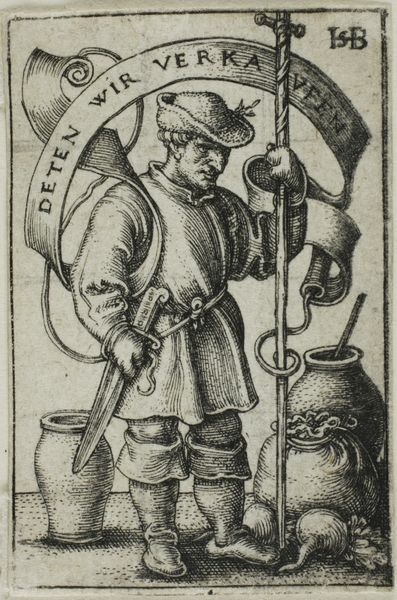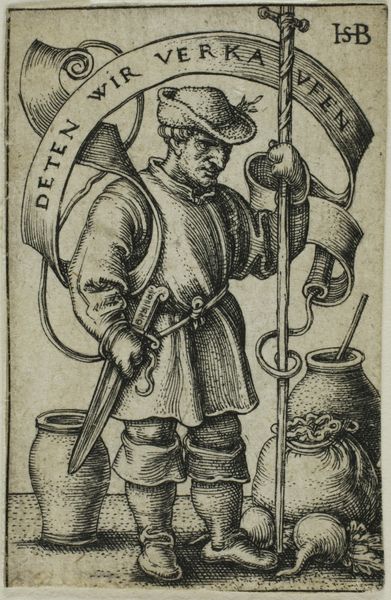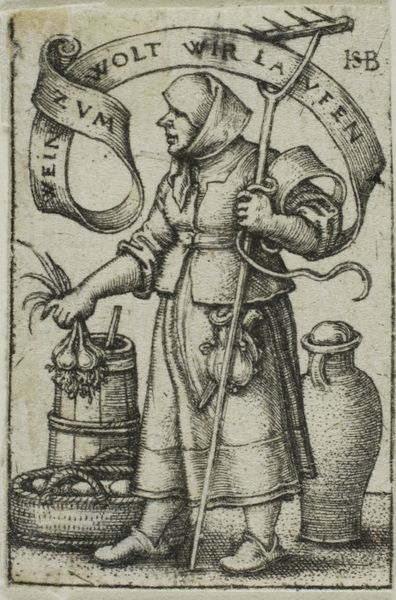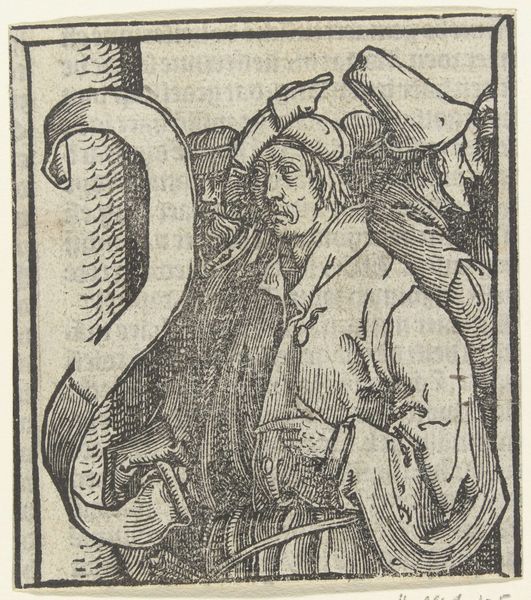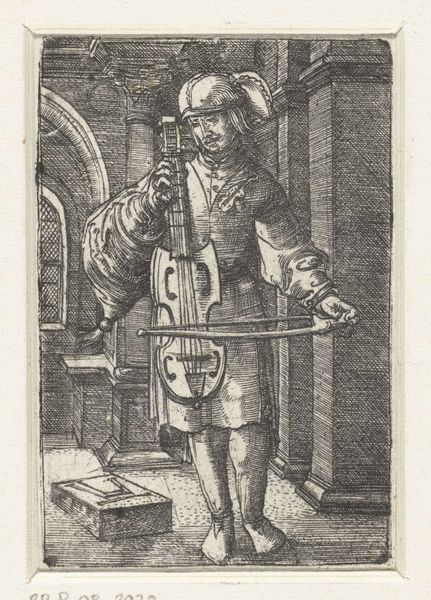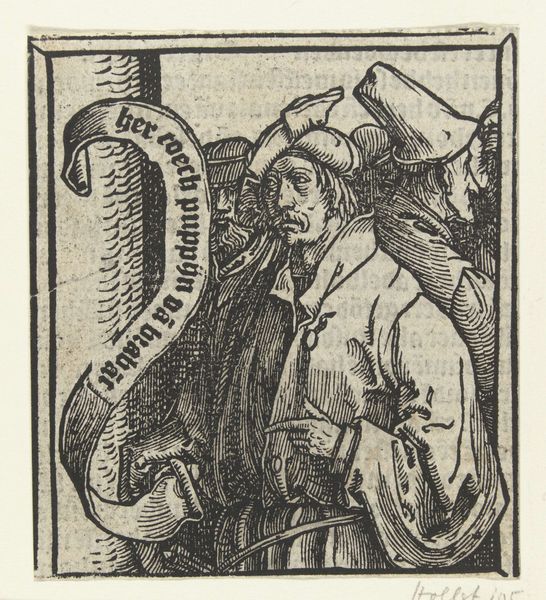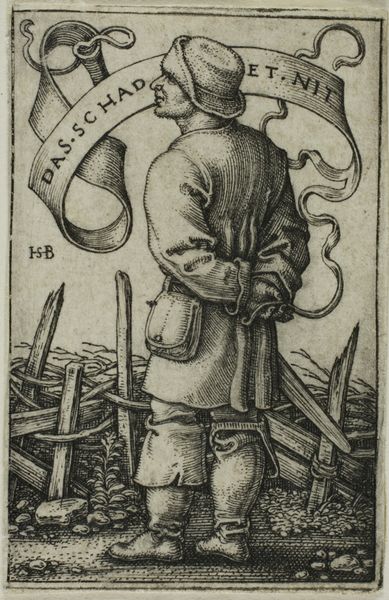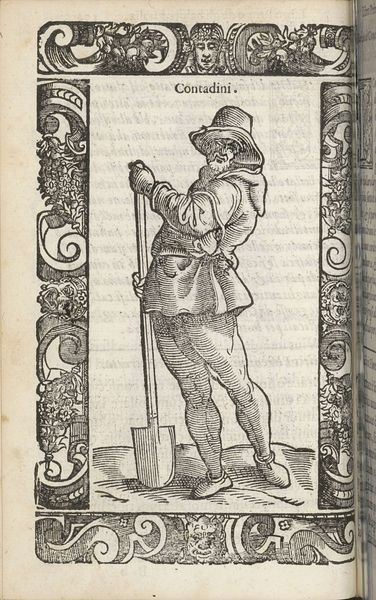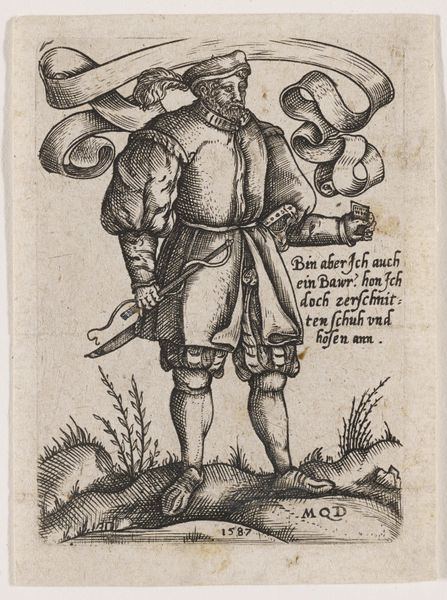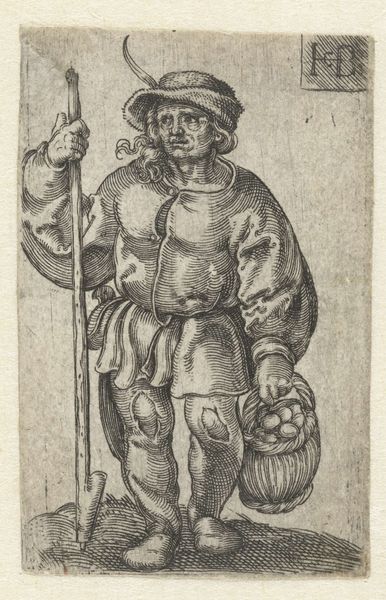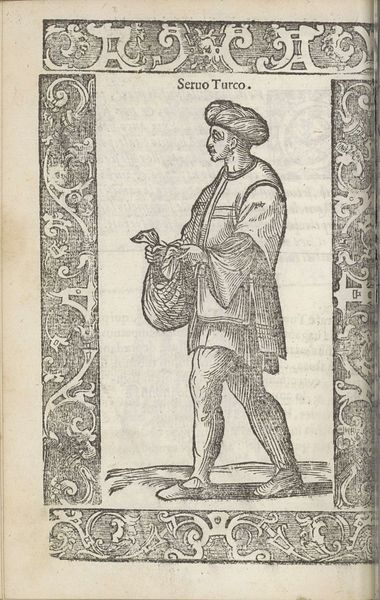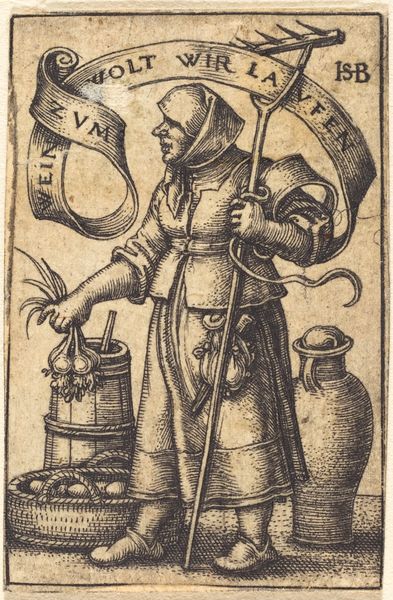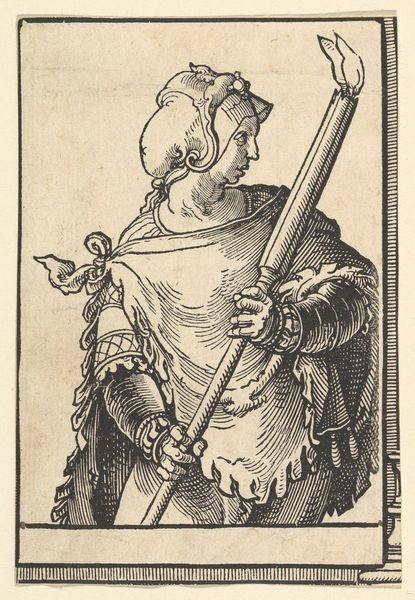
print, engraving
#
portrait
# print
#
caricature
#
figuration
#
line
#
genre-painting
#
northern-renaissance
#
engraving
Dimensions: height 40 mm, width 27 mm
Copyright: Rijks Museum: Open Domain
This is a print, ‘Boer verkoopt zijn produkten op markt,’ made around 1540 by Sebald Beham. It’s made using the intaglio process of engraving, where the artist would have used a tool called a burin to cut lines into a copper plate. Ink is then forced into these lines, and the surface of the plate wiped clean. Finally, paper is pressed firmly against the plate, drawing the ink out to create the image. The resulting print is small, but full of detail. The quality of the engraved lines would influence its appearance, dictating the tone and texture. Beham would have had to plan his design carefully, as every mark is deliberately made. The amount of labor involved in engraving is considerable, reflecting the skill and time invested in each print. Prints like this circulated widely in the 16th century, playing a crucial role in disseminating images and ideas. They were relatively affordable, and catered to a growing market for art among the middle classes. The subject matter—a farmer selling produce—also speaks to broader social and economic changes of the time, with an increasing emphasis on trade and commerce. Recognizing the materials and methods of production helps us to appreciate the print’s significance as both an artwork and a social artifact.
Comments
No comments
Be the first to comment and join the conversation on the ultimate creative platform.
